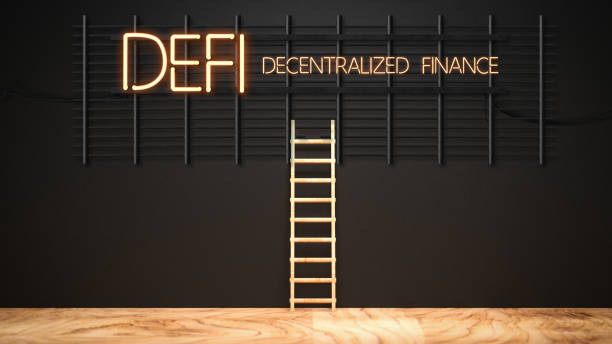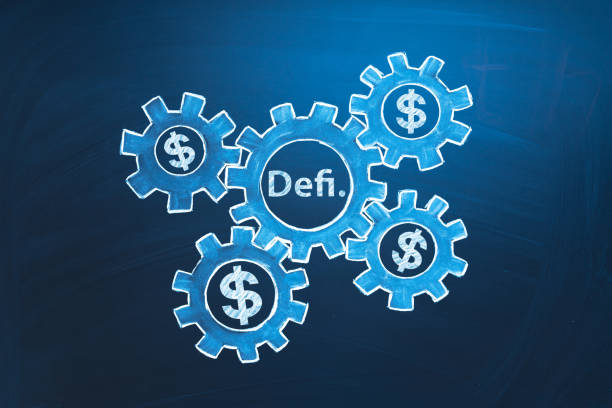Decentralized finance is a sector that is still in its early developmental stages. If it wants to topple the balance and take over stewardship from the traditional financial systems, it needs to rise above some ecosystem-related problems. But, reports have emerged that new technology is in the pipeline to help the developers and experts in the sector to offer solutions to the existing challenges.
DeFi is a wide-covering term that describes a wide array of new products and technologies that aim to offer innovative strategies for people to manage all their financial data autonomously. Users can manage and control their finances without the involvement of a central bank or any other centralized government institution.
Generally, decentralized applications (dApps) run on existing blockchains like Bitcoin, EOS, and Ethereum. The leverage smart contract technology enables users to have full control over all their finances. They cover investments, savings, predictions markets, lending, insurance, payments, and margin trading. It also covers nearly everything that the traditional financial system has to offer.
The decentralized finance tools link clients and users with services that do not consist of any centralized authority. This budding system is perfectly designed to ensure that the whole process is more efficient, safer, and fully transparent. These are the qualities and working ethics that traditional fintech solutions are struggling to implement.
However, various challenges still exist preventing the vision from getting realized.
What Makes Up The Decentralized Finance Market?
The decentralized finance market features a variety of actors and subsectors with some of the participants not available in the traditional finance space. Most of the participants are lenders that lend out their assets to the borrowers who seek quick access to the available assets. Furthermore, the exchanges can work as a medium for the lenders and borrowers to operate.
DeFi sectors also have various other essential facets and solutions. They include tokenization of real-world assets like insurance, art and real estate, prediction markets, peer-to-peer marketplaces, staking and collateral, and alternative savings that have interest-earning mechanisms.
Borrowing and lending are currently the most popular use cases in the DeFi industry. Lenders have lots of assets and they seek methods of earning interest in their holding that mainly transcend normal market appreciation. By introducing liquidity for any asset, the long-term lenders normally get their rewards when they use a specific lending platform.
Analysis shows that this market strategy comes with a symbiotic relationship of providing liquidity within an asset’s market while concurrently giving passive income to those that offer it. On the other hand, borrowers look for the benefits that come from temporarily controlling the lenders’ resources, even if it comes at a price.
By borrowing assets, users can short the commodity to get profits on crypto exchanges that do not have margin trading. Moreover, the participating platforms give quick access to the utility tokens that the borrowers do not wish to hold but want to use for a particular task like voting on any network.
Flash loans let users borrow funds, use the money, and then repay the money automatically using a single transaction. Decentralized exchanges (DEXs) have also become famous due to their automated swap capabilities. Smart contracts are the only ‘middlemen’ involved in this process. They do not take a cut or even slow down the whole exchange process.
All of the available funds are kept in a user’s full custody, which mitigates security challenges that have affected the centralized exchanges for several years. These security problems have cost the centralized exchanges millions of dollars in cryptocurrency as a result of hacks and mismanagement.
Liquidity pools are also a growing sector of decentralized finance and are majorly connected to decentralized exchanges. Some of the DEX platforms like Bancor Network and Uniswap encourage their users to develop and fund liquidity pools that are required to support and facilitate different exchange pairs.
Anybody who owns a token and wishes to exchange it with another can ass some liquidity for their token to let other participants swap and even trade for it. This open process is seen to undermine the concept of getting listed on the traditional stock exchanges. Both the DEXs and liquidity pools have experienced massive growth since their inception in Q1 2020.
Intrinsic Risks Existing In The Decentralized Markets
In this budding market, the most common risks come from issues that affect smart contracts, user error, market volatility, lack of enough insurance on loans, and probable implosion of the price mechanism. Interestingly, the DeFi market is relatively in its early stages despite its massive potential benefits. Hence, some of the major benefits that come with using these platforms also attract major risks.
Smart contract vulnerability is a major source of challenge impacting the decentralized finance space. Even though it has programmed intentions, loss of funds might happen when a contract is released into the ecosystem with a flaw that exists within its code.
Losses have happened in the past and most of the notable episodes hit Ethereum. This space has come a long way with audits and peer reviews becoming the norm but there is no guarantee that the DeFi attacks will not happen again.
One of the most infamous attacks was the one that targeted the bZx protocol. In that incident, a hacker exploited subtleties in the way ‘flash loans’. They stole thousands of dollars worth of Ether. Although such incidents result in updated solutions for the challenges that caused them, cybercriminals strive to find other loopholes and try to exploit them before the system operates optimally.
This smart contract challenge can be linked to another significant shortcoming that is affecting the entire DeFi space: user error. Developers say that their code is airtight and impenetrable. However, they can never determine how different users interact with their applications.
Millions of dollars have been lost after users sent funds to wrong addresses including the dApps’ smart contract blockchain addresses. This challenge can be resolved using ERC-777 and other token standards that can detect and then block mistaken transactions. Nevertheless, this strategy increases the transaction costs.
Another major feature that many users never see is the internal governance of a particular asset and external regulations. Interestingly, there is always a chance that a specific project might change how a platform is operated and who runs it. There are times when the alteration happens without any warning.
Furthermore, local governments can propose and enact new laws and legislation that can render the currency illegal or augment when the currency can be used. Other issues like the unpredictable markets affecting various decentralized services and the absence of insurance mean that there still exist some major risks. Thus, investors may lose their investment even when neither they nor the developers made mistakes.
What Issues Slow The Rate Of DeFi Adoption?
Several persistent issues affect user experience exceeding the risks that exist in decentralized finance. Some of the notable issues include over-collateralization, centralization, low liquidity, and little to non-existent interoperability between the blockchains.
DeFi is also not as decentralized as it should be. However, this is normal to ensure that the developers review and work on the network efficiently can quickly resolve issues that might come up at any given time. Although all that makes sense, it may result in unexpected situations where a dApp that is designed for public use is still centralized to some degree.
This occurrence is risky even when the developers are trustworthy because it creates ways for misuse of consumer funds allocated to different aspects of the project. Most projects adopt a “progressive decentralization” approach to solve the problem. In this context, a DeFi project is originally under the control of the central development team.
But, the team’s governance is created for ‘release’ to the community slowly over time. By using this strategy, the network becomes self-regulated eventually after everything is up and running.
In the case of borrowing and lending, the biggest challenge that exists is over-collateralization. Lenders ask for higher collateral to be put for their loans because there is no assurance with such a highly volatile crypto market. This explains why many lenders fail to agree with the borrowers unless adequate security is provided for the loans and it undermines the critical function of borrowing.
When lenders and borrowers fail to agree, the philosophy of decentralized finance which is to bank the unbanked remains unfulfilled. It also eats significantly into the profits made on leverage trading, and thus discourages the adoption of this use case.
Low liquidity and challenges in switching between blockchains are the other shortcomings that are associated with decentralized finance. Many tokens and currencies are exchanged daily on these DeFi platforms. In some incidents, the number of available traders is not enough to move assets around with ease.
Aggregating these shortcomings with limited means of transfer between different commodities normally focused on the cryptocurrency exchanges slows the rate of DeFi adoption. These issues may also slow the movement of value on these competent networks. All this works under the assumption that the underlying networks are not quite encumbered, which is also not guaranteed.
Is Interoperability The Missing Link?
Analysts and experts say that the main catalyst for decentralized finance adoption is interoperability. This phenomenon is described as the ability of every dApp, tool, and smart contract to interact with one another seamlessly. Different blockchains exist with each of them having its unique set of DeFi community and ecosystem.
Making sure that cryptos and digital assets flow through all blockchains seamlessly and their dApps ideally ‘unchains’ the value for the entire trill-dollar cryptocurrency sector. If that is achieved, it will boost the liquidity, utility, and usability of the decentralized finance market.
One project that is developing interoperability solutions for the DeFi space is pTokens. This project is making decentralized finance universally accessible by ensuring that dApps are usable for the crypto users without needing to offload or trade their Bitcoin, Litecoin, EOS, and other blockchain assets that they own.
pBTC is the first of the new pToken series. It lets anyone with bitcoin mint their EOS or Ethereum-compatible tokens. They can use the pBTC to begin interacting with all dApps. They include decentralized lending platforms where they can earn some interest on their loaned assets. These pBTC tokens can then be changed back to BTC at its current value at any given time.












